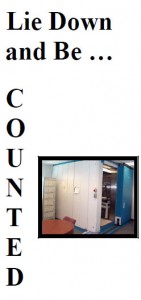The “Lie Down and Be Counted” project serves as a component of the WIPP EM that directly addresses the general concern about personal exposure to contaminants shared by residents who live near many DOE sites. Although this aspect of the project could be viewed as using local residents as monitors of contaminant release from the WIPP, the design of wide-scale monitoring of other media ensures (as much as reasonably possible) that contaminant releases would be detected in the environment long before significant contact with human residents. It is important to note that an individual who is determined to have internally deposited radioactive materials after the WIPP begins operation, could not use the results of this study to suggest that the uptake occurred as a result of exposure to materials at the WIPP unless that individual had been subject to an in vivo bioassay a priori, with negative results.
As in other aspects of the WIPP EM, in vivo bioassay testing has been used to establish a baseline profile of internally-deposited radionuclides in a sample of local residents. The sampling design included solicitation of volunteers from all segments of the community, with sample sizes sufficient to meet or exceed a 15% range margin of error for comparisons between major population ethnicity and gender categories as identified in the 1990 census. The minimum sample size threshold was achieved for the major categories early in 1998, and is as low as 8% margin of error range for some categories. Since the WIPP began operation, bioassays of the original volunteer cohort is repeated on a schedule of once every two years, and additional new volunteers are incorporated each year to create replacements for attrition from the original cohort.
→ For more information on Lie Down and Be Counted program, click here



